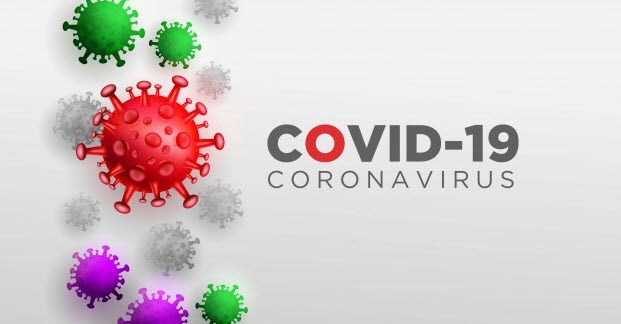
What the COVID Vaccine Does to Your Body?

What the COVID Vaccine Does to Your Body? there’s a lot of excitement right now around the record speed vaccines for covid-19, some of which are already starting distribution in parts of the world. But given that these are MRN, vaccines are a relatively new technology that has not been widely used before. We wanted to explain how they work and what happens to your body from the moment that a needle touches your skin. Like the vaccines, we’re used to seeing, these vaccines will be injected into the upper muscle of your arm.
But unlike typical vaccines, which introduce inactive or weakened forms of a virus, these will release genetic material called messenger RNA. So, what exactly does this mean RNA do?
Well, in a regular cell of your body, you have DNA inside of the nucleus, and this DNA stores all the information and instructions important to the functioning of your cells, your body, and ultimately makes you. Inside your cell is machinery that reads through your DNA and transcribes it into RNA, which then leaves the nucleus and goes into your cytoplasm.
And it’s here that the ribosomes in your cells read the RNA and depending on the specific code, build a series of amino acids which fold in on themselves to make proteins that keep you alive and functioning. This process is known as translation. It’s this process that viruses take advantage of in the first place. They insert their genetic information into you and then your cell machinery unwittingly starts taking that information and building proteins to help create more viruses.
So back to the needle. The RNA that is being injected into you from the vaccine also carries genetic instructions. But in this case, it’s only coding for one small part of the virus instead of the whole thing.
You’ve probably seen sars-cov-2 represented like this with the spikes on it. And it’s this spike protein which on its own is harmless, that the vaccines RNA codes for the MRSA makes its way into the cytoplasm of your cells where the ribosomes read the information and start to create the spike proteins. Once the protein is made, it goes to the cell membrane and then your cell breaks down and destroys the injected RNA instructions. So, what good does having a tiny fragment of virus spike in your body do?
Well, gives your body and more importantly, your immune system a preview of what the virus looks like without causing disease. Suddenly your antibodies will notice it and go, well, this doesn’t belong here, which triggers an immune response to recognize and prepare your body for the real thing without ever having to come in contact with the actual virus itself.
Your immune system essentially gets a head start by creating powerful antibodies that can neutralize and kill the real virus. And this antibody memory is stored in your B cells so that if you are ever infected in the future with the sars-cov-2 virus, your body now has the upper hand. This is known as an adaptive immune response. Your body has already seen these spike proteins before and therefore it already knows what to do.
Essentially, these Amarone vaccines allow your body to protect itself from a future infection without ever having to risk the consequences of getting the disease covid-19.
So why have an MRI on vaccines been used before while they are relatively new? Researchers have been experimenting with them for decades, but in the past, they’ve been very unstable. Enzymes in your body would break down the RNA quickly, so they needed to be packaged well. The ones being released now have the RNA encased in lipid nanoparticles, which essentially protect the money from being degraded. Since they’re more unstable than other types of vaccines, they have to be kept cold.
For example, the Fizer vaccine has to be stored at minus 70 degrees Celsius and normal refrigerated temperatures can only last five days. Of course, a global pandemic has certainly increased the funding and resources going towards these types of vaccines, which has helped to accelerate their development. What makes these vaccines so appealing is that unlike other vaccines, they can be made in a lab with readily available materials and made much quicker than other types of vaccines.
Instead of fully developing noninfectious viruses and then injecting them, these Amarone vaccines can sort of pass many hurdles by ingeniously using your own body. It’s also far more cost-effective to create Amarone molecules rather than the proteins themselves and also a lot more scalable, which is helpful when we are in a global pandemic waiting for a vaccine.
So, is it safe? And given that it’s a relatively new technology, should you be concerned at all? Well, that’s what these initial trial stages have been for, not only to test whether or not they work and cause immunity but to make sure they have minimal side effects. As of now, around 70000 people have been given these vaccines with no serious concerns. But it’s important to remember that just because it’s safe doesn’t mean there won’t be any soreness or pain.
Some recipients did report aches and pains, and as of now, you’ll need to receive two shots to ensure efficacy. I saw a great analogy by professor Shane Crotty, who works in vaccine research, and he said it’s not unlike going to the gym and getting exercise and sore muscles. A bit of pain can be a positive sign that good things are happening. Sometimes you have to earn your immunity, just like. You have to earn those biceps you wanted so bad; we know you’ve been asking about these vaccines a lot.
So, we hope that all this information was useful and concise, and educational for you because it does sort of help make things seem less unknown and scary in a very strange time.